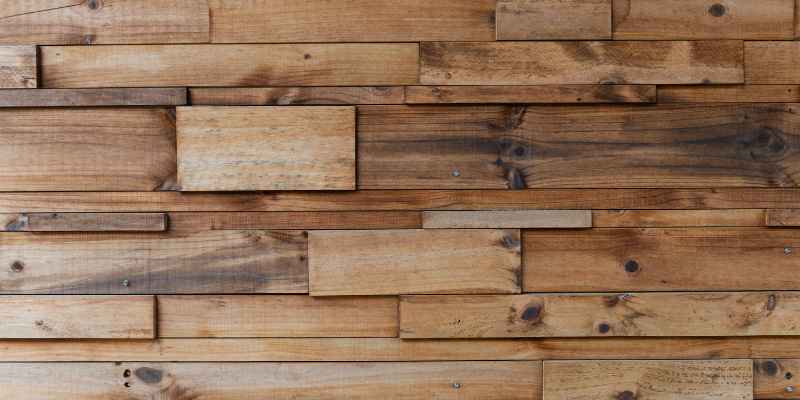To soften wood, immerse it in water or heat it with steam until it becomes pliable. This process makes it easier to bend or shape the wood as desired.
Softening wood is a common practice in woodworking, especially when creating curved or intricate designs. Whether you’re a professional carpenter or a DIY enthusiast, learning how to soften wood can help you achieve your woodworking goals. We’ll explore some of the different methods for softening wood, as well as some tips and tricks for getting the best results.
So if you’re ready to take your woodworking skills to the next level, read on to learn more about softening wood.
Introduction To Softening Wood
Softening wood is a crucial step in woodworking projects. You can use various methods such as steaming, soaking, or using a chemical softener to make the wood more pliable for bending or shaping. This process is essential for achieving the desired results in woodworking.
The Importance Of Wood Flexibility
Wood is a versatile material that has been used for various purposes for centuries. However, sometimes wood can be too hard and difficult to work with. That’s where the process of softening comes in. Softening wood makes it more flexible, easier to bend, and shape. Softening wood is essential for woodworking projects where you need to shape the wood to fit a specific design or pattern.
The importance of wood flexibility lies in the fact that it allows for intricate designs and shapes to be created from the wood. The process of softening the wood makes it easier to work with, reducing the risk of cracks or splits occurring during the shaping process. This makes it an essential process for woodworkers who want to create unique and intricate designs.
Applications For Softened Wood
There are various applications for softened wood. One of the most popular uses is in the creation of furniture. Softened wood can be bent and shaped to create unique designs that are not possible with hard wood. Softening wood is also useful in the creation of musical instruments, such as guitars and violins, where the wood needs to be shaped to create the perfect sound.
Another application for softened wood is in the construction industry. Softened wood can be used to create arches and curves in buildings, adding a unique architectural element to the design. Softened wood is also used in boat building, where it can be bent and shaped to create the perfect hull shape.
In conclusion, softening wood is a crucial process that enhances the versatility of the material and allows for unique and intricate designs to be created. The importance of wood flexibility cannot be overstated, and the various applications for softened wood make it an essential process for woodworkers, builders, and craftsmen alike.
Types Of Wood To Soften
When it comes to softening wood, it’s essential to choose the right type of wood for your project. Let’s explore the differences between softwoods and hardwoods and how to select the best wood for softening.
Softwoods Vs. Hardwoods
Softwoods come from coniferous trees and are easier to work with due to their porous nature. Hardwoods, from deciduous trees, are denser and may require more effort to soften.
Selecting The Right Wood For Your Project
- Consider the hardness and density of the wood.
- Choose softwoods like pine for easier softening.
- Opt for hardwoods such as oak for more durable projects.
Preparation Steps
Before you can begin the process of softening wood, it’s important to properly prepare the surface. This involves cleaning and sanding the wood, as well as gathering the necessary materials. By following these preparation steps, you’ll ensure that the wood is ready for the softening treatment.
Cleaning And Sanding The Surface
Start by thoroughly cleaning the wood surface to remove any dirt, dust, or debris. This can be done using a soft cloth or a gentle brush. If the wood has any existing finishes or coatings, such as paint or varnish, it’s important to strip them off before proceeding. You can use a paint stripper or sandpaper to remove these coatings, ensuring that you reach the bare wood.
Once the surface is clean and free from any coatings, it’s time to sand the wood. Sanding helps to smooth out any rough spots or imperfections on the surface, allowing for better absorption of the softening treatment. Use a fine-grit sandpaper and gently sand the wood in the direction of the grain. Be sure to sand evenly and avoid applying too much pressure, as this can damage the wood.
Gathering Necessary Materials
Before you begin the softening process, gather all the necessary materials. This will ensure that you have everything you need within reach, making the process more efficient. Here is a list of the materials you’ll need:
- A soft cloth or brush for cleaning
- Paint stripper or sandpaper for removing existing coatings
- Fine-grit sandpaper for smoothing the surface
- A softening agent, such as water or a wood conditioner
- A clean cloth or sponge for applying the softening treatment
- Plastic wrap or a plastic bag for covering the treated wood
Having these materials ready will save you time and ensure a smooth and successful softening process.
Steam Bending Technique
When it comes to working with wood, the steam bending technique offers a versatile and effective way to soften and shape wood for various woodworking projects. This method involves exposing wood to steam, which makes it more pliable and easier to bend without the risk of splitting or cracking.
Setting Up A Steam Box
Setting up a steam box is the first step in utilizing the steam bending technique. The steam box is a simple yet essential piece of equipment that can be constructed using materials such as PVC pipe, metal pipe, or a wooden box. The box should be large enough to accommodate the wood pieces being softened and bent.
Timing And Temperature Control
Timing and temperature control are crucial aspects of the steam bending process. Different wood species and thicknesses require varying amounts of time and heat to become pliable. It’s important to research and understand the specific requirements for the type of wood you are working with to achieve the best results.
Chemical Softening Agents
When it comes to softening wood, chemical agents can be a highly effective and efficient solution. These agents work by breaking down the wood fibers, making them more pliable and easier to work with. In this section, we will discuss how to choose the right chemical, important safety measures, and application tips for achieving the best results.
Choosing The Right Chemical
Choosing the right chemical for softening wood is crucial to ensure optimal results. Here are a few factors to consider:
- Type of Wood: Different chemicals work better on specific types of wood. Research which chemicals are recommended for the type of wood you are working with.
- Effectiveness: Look for chemicals that are known for their effectiveness in softening wood. Read reviews and seek recommendations from experienced woodworkers.
- Safety: Prioritize chemicals that are safe to use and do not pose any health risks. Opt for non-toxic options whenever possible.
Safety Measures And Application Tips
When working with chemical softening agents, it is essential to prioritize safety. Follow these safety measures and application tips to ensure a smooth and hazard-free process:
- Protective Gear: Always wear appropriate protective gear, including gloves, safety goggles, and a mask, to prevent any contact with or inhalation of the chemical.
- Ventilation: Work in a well-ventilated area to minimize exposure to fumes. Open windows or use fans to improve airflow.
- Read Instructions: Carefully read and follow the instructions provided by the manufacturer. Each chemical may have specific guidelines for application and safety precautions.
- Test on Small Area: Before applying the chemical to the entire piece of wood, test it on a small, inconspicuous area to ensure compatibility and desired results.
- Application Technique: Apply the chemical evenly using a brush or spray bottle, following the recommended application technique. Allow sufficient time for the chemical to penetrate the wood fibers.
- Post-Treatment: After the recommended duration, thoroughly rinse the wood with water to remove any residue. Allow the wood to dry completely before further handling or finishing.
By choosing the right chemical and following the necessary safety measures and application tips, you can effectively soften wood and make it more pliable for your woodworking projects.
Soaking Method

When it comes to softening wood, the soaking method is a popular and effective technique that can make the wood more pliable and easier to work with. By allowing the wood to absorb moisture, it becomes more flexible and can be shaped and manipulated with greater ease. There are various approaches to the soaking method, each with its own benefits and considerations. In this section, we will explore the water soaking process and alternative soaking solutions.
Water Soaking Process
The water soaking process involves submerging the wood in water to allow it to absorb moisture and become more pliable. This method is particularly effective for hardwoods and can be done using a container large enough to fully immerse the wood. The duration of soaking can vary depending on the type and thickness of the wood, with thicker pieces requiring longer soaking times. After soaking, the wood can be shaped and worked with while it is still damp, allowing for greater flexibility and ease of manipulation.
Alternative Soaking Solutions
Aside from water soaking, there are alternative solutions that can be used to soften wood. One such solution is the use of specific oils or solvents that can penetrate the wood and make it more pliable. Examples include linseed oil, mineral oil, and denatured alcohol, each with its own unique properties and application methods. These alternative soaking solutions can offer specific benefits such as enhancing the wood’s natural color or accelerating the softening process. However, it’s important to carefully consider the type of wood and the intended use before selecting an alternative soaking solution.
Kerf-cutting Method
In woodworking, the Kerf-cutting Method is a popular technique for softening wood by creating precise cuts to enhance flexibility.
Executing Precise Cuts
To start, make shallow parallel cuts along the grain of the wood using a saw.
Ensure the cuts are spaced evenly to maintain structural integrity.
Be careful not to cut too deeply to prevent splitting the wood.
Bending And Shaping After Kerfing
Once the kerf cuts are made, gently bend the wood along the cut lines to increase pliability.
For intricate shapes, use clamps or forms to hold the wood in place while it sets.
Apply moisture or heat to aid in the bending process if needed.
Heat Gun Technique
Softening wood can be achieved through the heat gun technique. By applying heat to the wood surface, it becomes more pliable and easier to work with, allowing for various woodworking projects. This method is a great way to manipulate wood without compromising its structural integrity.
Proper Use Of A Heat Gun
When using a heat gun to soften wood, ensure you keep the heat gun moving to prevent scorching. Start on a low setting to avoid damaging the wood.
Advantages And Limitations
Advantages: Quick and efficient way to soften wood. Limitations: Risk of overheating and scorching the wood if not used carefully.
Finishing The Softened Wood
To soften wood, start by soaking it in warm water for several hours. Then, use a soft-bristled brush to gently scrub the wood fibers. Next, let the wood dry completely before finishing it with a wood conditioner to restore its natural beauty.
Stabilizing The Form
After softening the wood, it’s crucial to stabilize its form to prevent warping.
Sealing And Protecting The Wood
Seal the softened wood with a protective finish to enhance durability and longevity.
Tips And Tricks
To effectively soften wood, utilizing various tips and tricks can help achieve optimal results. Below, we outline some valuable techniques to soften wood efficiently.
Troubleshooting Common Issues
Common issues when softening wood include excessive dryness or hardness. To remedy this, soak the wood longer in the softening solution.
If the wood remains stiff, consider increasing the temperature of the softening solution to enhance effectiveness.
Enhancing Flexibility
To enhance wood flexibility, try steam softening by using a steaming machine or hot water. This method can help soften wood fibers effectively.
Another technique is to apply pressure on the wood while it softens to improve flexibility and moldability.
Safety Precautions
When softening wood, it’s important to prioritize safety precautions to protect yourself and others. By following some basic safety measures, you can significantly reduce the risk of accidents and injuries. Here are some essential safety precautions to keep in mind before softening wood:
Personal Protective Equipment
Wearing the proper personal protective equipment (PPE) is crucial when working with wood softening materials. Ensure that you have the following PPE before starting the process:
- Safety goggles: Protect your eyes from wood particles and chemical splashes
- Respirator mask: Prevent inhalation of harmful fumes from chemicals
- Gloves: Shield your hands from direct contact with chemicals and splinters
- Long-sleeved clothing: Cover your skin to minimize exposure to chemicals
Handling Chemicals And Tools
Proper handling of chemicals and tools is essential to ensure a safe wood softening process. Here are some key points to keep in mind:
- Read the instructions: Familiarize yourself with the usage and safety guidelines for the chemicals and tools you’ll be using
- Store chemicals properly: Keep them in a well-ventilated area away from heat sources and out of reach of children and pets
- Use tools correctly: Follow the manufacturer’s instructions for using tools such as sanders, scrapers, and brushes
- Dispose of waste safely: Dispose of used chemicals and other waste materials according to local regulations
Creative Projects Using Softened Wood
Softened wood opens up a world of possibilities for creative projects. Its pliable nature allows for unique and intricate designs that can be incorporated into various art forms and functional pieces. Whether you’re interested in furniture design or artistic wood sculptures, softened wood offers endless opportunities to showcase your creativity. Let’s explore some exciting ideas to inspire your next project.
Furniture Design Ideas
Softened wood can be transformed into stunning furniture pieces that combine beauty and functionality. Here are a few ideas to get you started:
- Create a curved wooden chair with softened wood as the main material, providing both comfort and elegance.
- Design a unique coffee table with softened wood tabletop, showcasing the natural grain patterns and adding a touch of sophistication to your living space.
- Construct a stylish bookshelf with softened wood shelves, allowing you to display your favorite books and decorative items in a visually appealing way.
Artistic Wood Sculptures
Softened wood offers endless possibilities for creating intricate and captivating wood sculptures. Here are a few artistic projects you can explore:
- Carve a beautiful figurine or statue from softened wood, capturing the essence of the subject with delicate details.
- Construct a mesmerizing wall art piece using softened wood strips, arranging them in a pattern that creates depth and visual interest.
- Design a unique wooden centerpiece for your dining table, sculpting softened wood into an organic shape that becomes a conversation starter.
Whether you choose to embark on a furniture design project or create artistic wood sculptures, working with softened wood allows you to push the boundaries of your creativity. The pliability of softened wood gives you the freedom to experiment with shapes and forms, resulting in truly unique and captivating pieces.

Frequently Asked Questions
How Can I Soften Wood Without Using Chemicals?
You can soften wood naturally by using steam. Place the wood in a steam box or wrap it in wet towels, then apply heat with a steam generator. The steam will penetrate the wood fibers and make it easier to shape or bend.
What Are Some Natural Methods To Soften Wood?
One natural method to soften wood is to soak it in water for a period of time. This allows the wood fibers to absorb moisture and become more pliable. Another method is to apply heat through steam or hot water, which helps to relax the wood fibers and make them easier to work with.
Can I Use A Microwave To Soften Wood?
No, it is not recommended to use a microwave to soften wood. Microwaving wood can cause it to dry out too quickly, leading to cracking or warping. It is best to use methods such as soaking or steaming to soften wood in a controlled manner.
Conclusion
Softening wood can be achieved using various methods such as steaming, soaking, or using a commercial wood softener. Each technique has its own advantages and considerations, so it’s important to choose the method that best suits your project. By following these tips, you can successfully soften wood for your woodworking projects.

